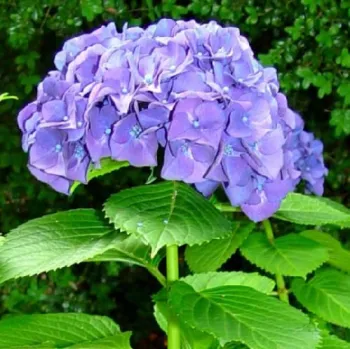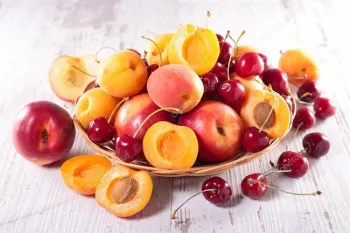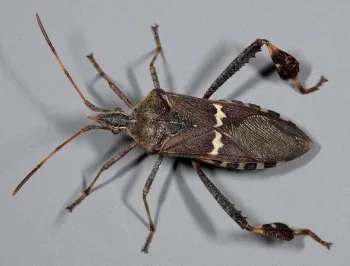Four chores a month doesn't seem like much, but as the days grow hotter, and longer, be glad that with only four big things to think a out, the chores can be spread over several days if need be.
July Ideas
ONE –WATER – We are officially facing another drought year, so conservation of as much water as possible in the landscape is an imperative. Do not water mature, native California oaks. To save mature, drought tolerant trees, deep water only once per month. Mature fruiting and most ornamental trees growing in our clay-loam soil will need a deep irrigation every 14 days. Mature citrus trees can go about 10 days between deep irrigation. Potted trees need to be checked daily.
TWO – Lawn turning brown? Replace it with drought resistant landscaping. If you need to keep a lawn for some reason, and it is browning in large areas, it could be an irrigation problem. A quick irrigation audit of the lawn area will help determine if the sprinklers are matched and working properly. Information on checking the output of lawn sprinklers can be found here. Check with your local water provider to see if they are offering partial or complete rebates for changes to efficient sprinklers. In spots with a more defined edge, it could mean a lawn disease or pest problem. Evidence of caterpillars or grubs can be found just under the surface of the green grass right outside of the damaged area. If the brown area is not spreading, treatment to destroy the pests is

THREE – Mophead Hydrangeas (those with the big, round blooms) produce flowers on the previous year's growth – the “old wood.” To shape and control the size of a mature plant (5 years or more) and to avoid cutting off next year's flower buds, prune stems back to 12 inches right after the blooms fade this month. Fewer, but larger flowers will grow next spring if you cut some of the stems back to the base of the plant.
FOUR – Avoid harboring pests that will affect next year's production by cleaning up mummies of old fruit and nuts in and under trees.
In August
ONE – Take some time during these dog days of summer to enjoy the landscape and garden while planning a winter garden and deciding on landscape additions. Select seed, gather whatever soil amendments, tools, and irrigation supplies are needed, and find where that perfect plant, shrub, or tree can be purchased.
TWO – It is time to think of a cool season vegetable garden. Just saying those words, like a mantra., may bring some relief from the heat this month. The downside is that the seeds need to be planted and nurtured this month to produce over the winter. Lee Miller's article, Planning and Planting a Cool Season Vegetable Garden, in the 2013 summer issue of the Master Gardener newsletter, Garden Notes, provides additional information. Lettuce, kale, and Chinese cabbage planted now will mature for fall salads. Try some heirloom lettuces this year to brighten both gardens and salads. Beets, carrots,

THREE – Apricots and cherries should have their final pruning this month. Pruning during the wet, winter season could lead to detrimental canker infections in the trees. The pathogens for these diseases are spread by rain or tree wounds (like pruning cuts) during wet weather and continue to spread through the wood of the tree for several years.
FOUR - Canes of single-crop blackberries and raspberries that have finished fruiting should be cut to the ground. Thin out the new growth. Remove all but 5 to 8 of the strongest blackberry canes and 8 to 12 strong raspberry canes per plant. Wait until after the fall harvest to prune ever-bearing varieties.
September Notes
ONE – Leaf-footed bugs should be noticeable now. They are easily recognizable as medium to large sized insects that feed on fruits, fruiting vegetables, nuts, and ornamentals. They seem to especially love pomegranates and almonds. They have piercing-sucking mouthparts that allow them to feed on plant parts, particularly seeds. Leaf-footed bugs get their name from the small leaf-like enlargements found on the hind leg. They typically overwinter as adults in protected areas such as in woodpiles, palm fronds, citrus trees, under peeling bark, or in tree cracks. Overwintered adults live from September/October until late spring when the weather starts to warm. They can be handpicked and dropped in soapy

TWO – Landscapes can be brightened by setting out transplants of a variety of flowers found in local nurseries. If there is room, plant a tree on the southwest side of a dwelling to provide shade in the coming years. Be sure to check the mature size of the tree to know if there will be ample room once it reaches maturity. Shrubs and groundcovers that are beginning to look a little bedraggled should be replaced as the weeks begin to cool. If this is a more bountiful year for water, nature should do most of the fall and winter watering to develop a strong root structure and beautiful new growth starting next spring.
THREE – Although it seems kind of early to think about spring, now is the time to plant spring blooming bulbs. Bulbs should appear in nurseries right after Labor Day. They are most effective in big flowerpots and in kidney-shaped drifts at the front of garden beds. Some excellent choices include bluebells, daffodils, hyacinth, grape hyacinth, and tulips. Bulbs should bloom beautifully in spring with just rainwater over the fall and winter months.
FOUR – In case rain is sparse again this year, organic mulch applied several inches thick around plants will help keep roots moist. Keep the mulch 3-5 inches from the trunks of plants to avoid problems with rot.
Information for this article has been gathered from:
www.ipm.ucdavis.edu
www.sunset.com/garden
www.farmerfred.com

